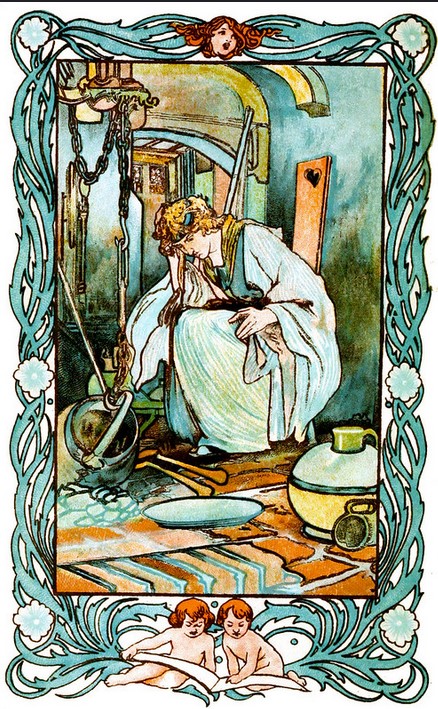
Word of the Day: Kvetch
Today’s word of the day, thanks to the New York Times, is kvetch. Kvetch can be either a noun or a verb. As a verb, it means to “express complaints, discontent, displeasure or unhappiness” (https://www.nytimes.com/2024/01/12/learning/word-of-the-day-kvetch.html) or “to complain, whine,” (https://www.etymonline.com/search?q=Kvetch). As a noun, it means “a constant complainer” or “a nagging complaint” (see the NY Times link).
According to Etymonline, the word appears in English in 1936 as “a term of abuse for a person” and in 1953 as a verb “(implied in kvetching), from Yiddish kvetshn, literally ‘squeeze, press,’ from German quetsche ‘crusher, presser’” (https://www.etymonline.com/search?q=Kvetch). Yiddish is a central European language spoken mostly by Ashkenazi Jews. In fact, the original name is “Yidish-Taytsh, literally ’Judeo-German.’” “It originates from 9th century[10]: 2 Central Europe, providing the nascent Ashkenazi community with a vernacular based on High German fused with many elements taken from Hebrew (notably Mishnaic) and to some extent Aramaic. Most varieties of Yiddish include elements of Slavic languages and the vocabulary contains traces of Romance languages.[11][12][13] Yiddish has traditionally been written using the Hebrew alphabet; however, there are variations, including the standardized YIVO orthography that employs the Latin alphabet” (https://en.wikipedia.org/wiki/Yiddish). On a sad note, there were some 11 million speakers of Yiddish before World War II, but the current number is estimated to be about 600,000.
This date sees the birth of one famous author and the death of another. In 1628, Charles Perrault was born, and in 1976, Agatha Christie died.
Charles Perrault is best known for writing “Histoires ou contes du temps passé, avec des moralités or Contes de ma mère l’Oye (Stories or Tales from Past Times, with Morals or Mother Goose Tales) (https://en.wikipedia.org/wiki/Histoires_ou_contes_du_temps_pass%C3%A9). Perrault grew up in a prosperous middle-class family. His father was an attorney. He went to good schools, got a good education, and planned to be a lawyer, but he ended up going into government service. He worked in the court of Louis XIV, the Sun King, and actually had some influence in the design of the Louvre, as well as in the founding of the Academy of Science. He was a member of the Académie Française.
Because of political rivalry, he was forced into an early retirement at the age of 56. He decided to focus on his daughters, who were young women, and that led him to composing stories. Scholars are not sure where the stories came from, but wherever he got them, he revised them, made them more literary, and added morals. The stories included versions of “Little Red Riding Hood,” “Sleeping Beauty,” “Cinderella,” “Puss in Boots,” and “Bluebeard.” The stories are similar to but different from the ones we find in Grimms’ Fairy Tales, which came out in Germany over 100 years later. And they included morals to the stories, morals not included by the Grimm Brothers. But many of the details of the most common versions of these stories derive from Perrault.
The writer who died on this date in 1976 was Agatha Christie, well known for her detective novels. Christie (maiden name Miller) came from a well-off middle-class family, much like Perrault. She was homeschooled, and she began her writing career fairly early. But initially, she was unsuccessful. She got married to Archie Christie in 1912, at 22 years old.
She wrote her first detective novel, The Mysterious Affair at Styles, in 1916, inspired by the influx of refugees from Belgium (Hercule Poirot is from Belgium) and her interest in the fiction of Wendell Wilkie and Arthur Conan Doyle. After some rejections, it was finally published in 1920. She followed Styles with The Secret Adversary, featuring Tommy and Tuppence, along with some stories.
In 1926, Archie asked her for a divorce because he had fallen in love with someone else. In December of that year, after a fight, Agatha Christie disappeared for 10 days. She was finally located at a hotel, but the disappearance remains a mystery. She does not mention it at all in her autobiography, and her biographers disagree about why it happened. She probably had a nervous breakdown, and after the event she went through a time of convalescence.
But she didn’t stop writing, and eventually she published 66 novels and 14 collections of short stories. In addition, she wrote a few non-fiction books. She also remarried, and the second marriage lasted until her death. Despite her early failures and her unsuccessful marriage, she became the queen of the Golden Age of Detective Literature.
It is remarkable what these two authors overcame to find their fame and success. Either could have given up, Perrault because he was forced into retirement, Christie because her husband left her for another woman. But instead of kvetching, they both worked to accomplish their goals.
Today’s image comes from an illustration by Charles Robinson, “’Cinderella in the Kitchen,’ from Tales of Passed Times with stories by Charles Perrault, 1900”, published by J. M Dent (https://www.flickr.com/photos/halloweenhjb/52300834301). I guess Cinderella is another “person” who could have kvetched but didn’t.